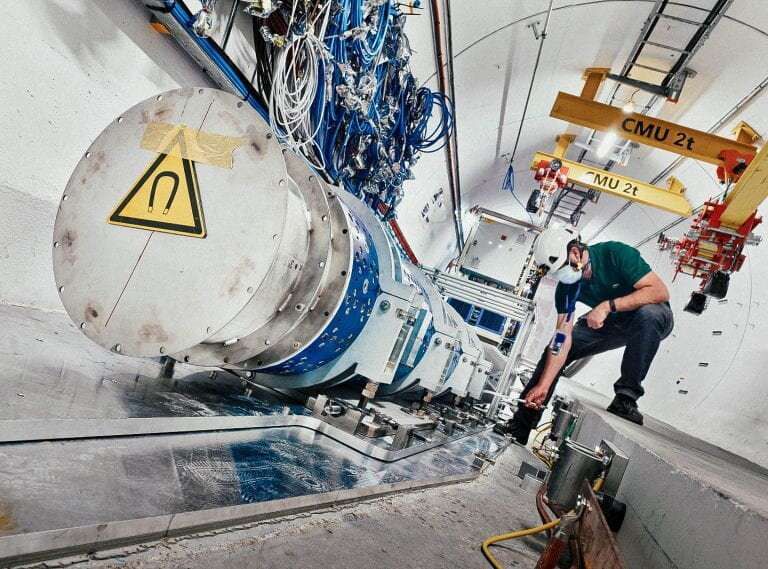
Neutrinos are basically omnipresent in the universe but only in the right conditions do they interact with ordinary matter. Trillions of neutrinos are passing through your body as you read this sentence. But to actually “see” the particles, physicists have to build massive detectors in extremely isolated conditions. Last week, a team of physicists working in CERN’s Large Hadron Collider announced the facility’s first-ever detection of neutrinos, which are some of the smallest, most weakly interacting particles yet proven to exist. Neutrino detectors have been buried in mile-deep ice or submerged in the deepest lake in the world, for example. But the recent detection—published in Physical Review D last week—flips that script, as it is the first one to come out of a collider.
The particles were detected by a pilot run of an emulsion detector called FASER, a particle physics experiment at the Large Hadron Collider. Emulsion detectors are a way of looking for super-small particles, like the unknown stuff that constitutes dark matter. The FASER pilot detector was made of alternating lead and tungsten plates (101 and 120 of them, respectively), each containing a corresponding number of emulsion films. Neutrinos produced by the reactions in the Large Hadron Collider smash into the heavy metal nuclei in FASER, leaving marks of their presence on the emulsion layers.
Click here to access the video
Credits:
https://gizmodo.com/physicists-detect-neutrinos-for-first-time-ever-using-l-1848131886

No comments:
Post a Comment